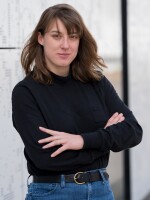In less than two months, the area just south of St. Louis will welcome a total solar eclipse, a celestial event that will attract students and scientists who study space, atmospheric science and physics.
In a total solar eclipse, the moon travels between the sun and Earth at just the right angle, creating a shadow that falls across parts of the planet. On April 8, the shadow’s “path of totality” will move in an arc across North America from Mexico to southeastern Canada.
“To me, there's always science to be found,” said Brody Echer, an accounting and information systems management student at Iowa State University who is traveling to Carbondale, Illinois, during the eclipse as part of his work on NASA’s Nationwide Eclipse Ballooning Project. “Eclipses don’t happen every day. It's one of those things where you have to be there on a certain day, and it won't wait for anybody.”
The Nationwide Eclipse Ballooning project recruited students from middle schools, high schools and universities to launch weather balloons to capture the eclipse on video from near-space altitudes.
The weather balloon researchers are among the many people who will be coming to observe the eclipse at Southern Illinois University Carbondale and throughout the region, school officials said.
A total eclipse occurs somewhere in the world approximately every year and a half. However, southern Missouri, Illinois and Kentucky are the only places located in the 2017 eclipse path that will also experience a total eclipse in 2024. In Carbondale, the total eclipse will last 4 minutes, 9 seconds.
The eclipse offers researchers a rare chance to study specific facets of the sun and the environment on Earth, said Bob Baer, a researcher at SIU and co-chair of the Southern Illinois Eclipse Steering Committee.
A multiday eclipse expo co-sponsored by NASA at SIU will allow astronomers and solar scientists to share research with each other before the main event. Scientists will put telescopes and instruments on top of university buildings or can camp out in a designated scientist-only area called the Dark Site. Saluki Stadium will also offer a guided observation event for the general public.
Baer will be working with a team of citizen scientists to study the outer parts of the sun's atmosphere, called the corona. Because the center of the sun is so bright, it’s usually obscured. A total eclipse is the perfect time to observe the corona, which to the naked eye will look like a white ring of light around the pitch black dot of the moon.
In the eclipse path, more than 80 teams equipped with identical telescopes will take pictures of the corona to try to determine why the corona is hotter than the sun’s surface as part of the project, he said.
“We are still learning what the corona does, it’s one of the bigger mysteries,” Baer said. “The corona heats up as you go away from the surface of the sun for a little while, and then it cools down. But why is that, and what's going on there?”
The eclipse is also a way to get younger people involved in scientific research, said Kendra Sibbernsen, an Omaha-based physics and astronomy professor who, along with her husband, Michael Sibbernsen, leads National Eclipse Ballooning Project’s Nebraska team. The Sibbersens will travel with Brody Echer to southern Illinois in April.
“We were participating in this in 2017, when the eclipse came through in Nebraska,” Kendra Sibbernsen said. “Just getting the students to witness totality is fantastic. But then being a part of this kind of celebration of science as the balloons are going up, and then getting the data back and analyzing it, it's been an amazing experience.”
Seeing footage of the eclipse from 100,000 feet in the sky is an unparalleled experience, said Michael Sibbernsen, director of education for Branched Oak Observatory near Lincoln, Nebraska.
“We have video images, and you could see the shadow coming towards you,” he said. “And then all of a sudden the balloon was being engulfed within that darkness.”
Balloon teams in the project will also launch payloads to study atmospheric conditions during the eclipse in addition to capturing video of the event, he said.
Eclipses have been behind some of the most important scientific discoveries in history, said Jim Buckley, a physics professor at Washington University. Scientists who saw how light bent around the sun during an eclipse in the early 20th century used the observations to prove Einstein’s general theory of relativity, which posited that large celestial objects could bend light and spacetime.
Buckley said that it took seeing the eclipse to appreciate its power.
“My initial reaction was, ‘this is really not that interesting.’ It's not like supermassive black holes, or dark matter, or all the things I like,” he said. “But then we got to this point of totality and saw the corona. It's something you just can't do a Google Image Search of and get the same thing out of it. It is really an emotional experience.”
The eclipse’s largest impact on science is likely to be getting people interested in astronomy and space, he said.
“I do think it's an opportunity for us to preach a little bit, to profess a little bit about the power of science,” Buckley said. “One of my messages is: Science is real, it is true, it makes a difference in our lives. So to me, it's kind of an opportunity to get on a soapbox a little bit and talk to people.”







